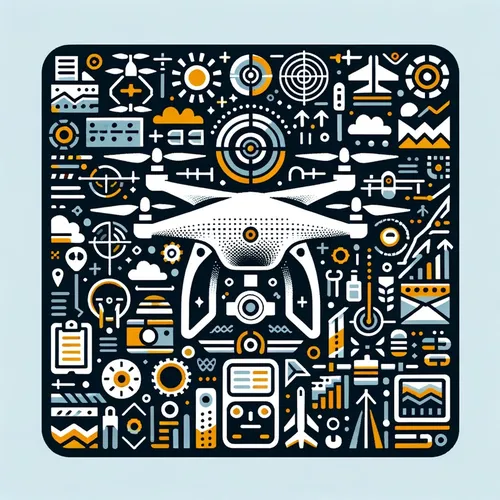Drones in 2025: Mastering the Skies, Maintaining Your Fleet, and Staying Ahead of the Competition
- Author
- Quiet. Please
- Published
- Fri 22 Aug 2025
- Episode Link
- https://www.spreaker.com/episode/drones-in-2025-mastering-the-skies-maintaining-your-fleet-and-staying-ahead-of-the-competition--67475677
This is you Professional Drone Pilot: Flight Tips & Industry Updates podcast.
For commercial drone pilots, aerial photographers, and inspection specialists, staying ahead in 2025 means mastering not just the controls but the full spectrum of professional drone operations. Advanced flight techniques go beyond basic maneuvers: successful pilots are dedicating time to mastering complex skills such as coordinated multi-axis movements, precision hovering in variable winds, and simultaneously manipulating the aircraft and gimbal for seamless cinematic shots. Podcast experts and industry instructors emphasize the importance of routine drills, rehearsing emergency landings, and practicing orientation control—especially when the drone camera is facing the operator, which inverts control logic and demands quick thinking.
On the equipment side, leading research from the University of Texas at Arlington points to a major shift toward predictive maintenance. Their team is piloting millimeter-wave radar systems that can detect developing mechanical issues before breakdowns occur, a timely innovation as drone fleets grow larger and missions become more complex. According to Archivemarketresearch, the drone maintenance market is forecast to grow at an annualized rate above 5 percent through 2033, with machine learning and on-board sensors driving predictive maintenance adoption. For operators, integrating regular sensor diagnostics and logging each flight’s wear patterns is a practical way to maximize equipment lifespan and ensure operational readiness.
As for business opportunity, industry reports highlight the trend of switching to modular drone fleets, which makes it possible to use a single drone with multiple interchangeable payloads—cutting costs and simplifying compliance. DroneFly projects that AI-driven payload optimization will further enable operators to automatically select and configure tools for aerial imaging, delivery, or spraying tasks. The result: more efficient, flexible missions, and the ability to serve a wider client base.
Certification requirements and insurance remain dynamic. In 2025, authorities in the United States and European Union are clamping down on compliance, demanding updated training on both manual and autonomous systems. Operators are reminded to routinely verify the validity of their pilot’s certificate, renew insurance coverage (paying special attention to hull damage and cyber risks), and document all maintenance for liability protection.
Pricing strategies and client management grow ever more competitive as new entrants join the field. Operators are finding success with transparent pricing models—bundling flight operations, data processing, insurance, and maintenance as a value-added service package. This not only streamlines billing but also fosters stronger client loyalty.
Recent news includes the UTA preventive maintenance breakthrough; reports from DroneFly on fleet modularity savings; and next-generation battery releases promising 20 to 30 percent longer flight times, allowing more productivity from every charge.
Looking ahead, drones are evolving into AI-powered, networked tools capable of autonomous flight, real-time data analysis, and seamless interoperation with other robotics. Those who invest in these technologies, coupled with continuous hands-on training and business agility, are best positioned to capture growing market share as the sector matures.
Thanks for tuning in for these essential insights on being a professional drone operator in 2025. Be sure to come back next week for more updates and practical tips. This has been a Quiet Please production, and for more from me, check out Quiet Please Dot A I.
For more http://www.quietplease.ai
Get the best deals
